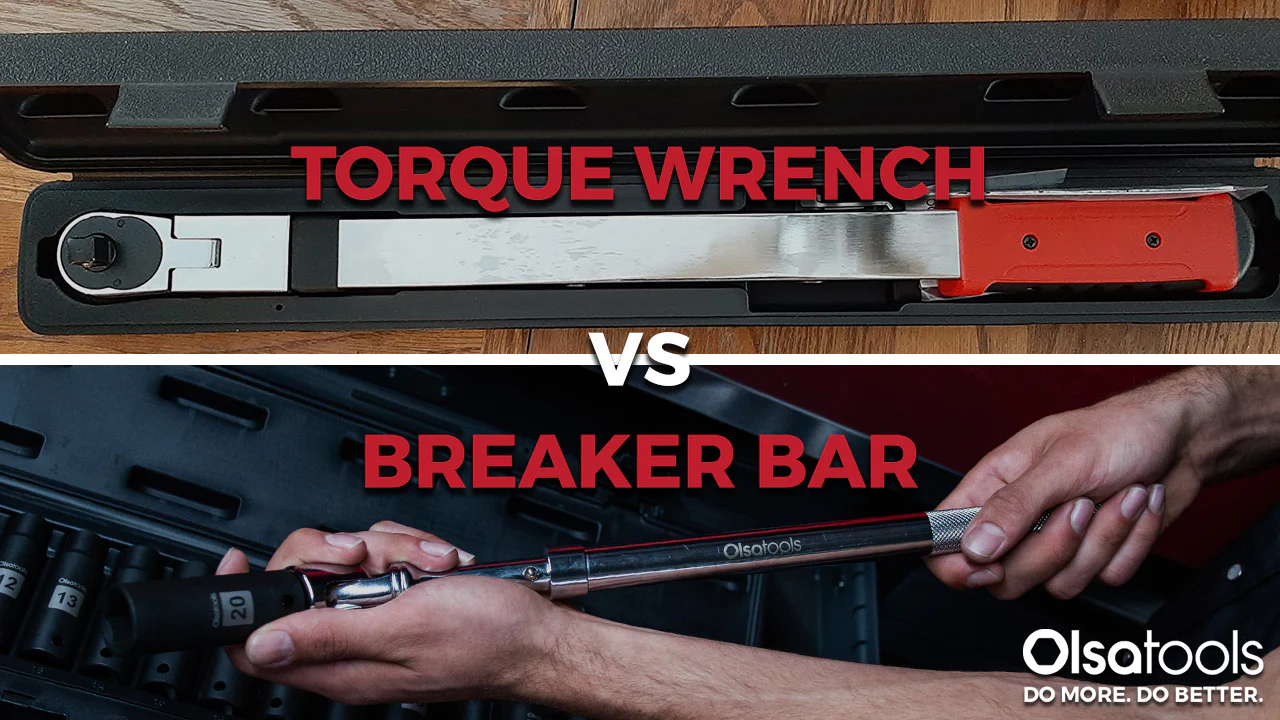SEO Meta Description:
Discover the versatility and power of the breaker bar – the go-to tool for tackling stubborn bolts and nuts. Learn how to use it effectively and safely, and find out why every DIY enthusiast and professional mechanic needs one in their toolbox.
Introduction: Welcome to the world of breaker bars, where stubborn bolts and nuts meet their match! In this comprehensive guide, we’ll delve into everything you need to know about breaker bars – from their history and design to practical tips on how to use them effectively. Whether you’re a seasoned mechanic or a DIY enthusiast, understanding the ins and outs of breaker bars can revolutionize your approach to automotive maintenance and repair. So let’s dive in and unlock the secrets of this indispensable tool.
Table of Contents:
| Heading | Sub-Heading |
|---|---|
| Introduction | – |
| The Evolution of Breaker Bars | – Origins of the breaker bar |
| – Advancements in design | |
| Anatomy of a Breaker Bar | – Handle |
| – Head | |
| – Drive | |
| Types of Breaker Bars | – Standard breaker bars |
| – Flex-head breaker bars | |
| – Sliding T-handle breaker bars | |
| Choosing the Right Breaker Bar | – Considerations for selection |
| – Matching the drive size | |
| – Evaluating handle length | |
| – Assessing durability | |
| How to Use a Breaker Bar | – Precautions and safety measures |
| – Step-by-step guide | |
| – Tips for maximum effectiveness | |
| Breaker Bar Maintenance | – Cleaning and lubrication |
| – Storage tips | |
| – Common maintenance issues and solutions | |
| Applications of Breaker Bars | – Automotive repair |
| – Household maintenance | |
| – Industrial applications | |
| Breaker Bar vs. Ratchet Wrench | – Key differences |
| – When to use each tool | |
| – Advantages of breaker bars over ratchet wrenches | |
| FAQs | – What is a breaker bar used for? |
| – Can I use a breaker bar for lug nuts? | |
| – How do I choose the right size breaker bar? | |
| – Are breaker bars safe to use? | |
| – Can I use a breaker bar as a cheater bar? | |
| – What should I do if my breaker bar gets stuck? | |
| Conclusion | – Recap of the importance of breaker bars |
The Evolution of Breaker Bars: Breaker bars have a fascinating history, tracing back to their origins in early automotive repair. Originally, these tools were simple extensions of conventional wrenches, providing extra leverage for tackling stubborn bolts. Over time, advancements in metallurgy and manufacturing techniques led to the development of sturdier and more ergonomic designs, transforming breaker bars into essential components of every mechanic’s toolkit.
Anatomy of a Breaker Bar: Understanding the anatomy of a breaker bar is crucial for choosing the right tool for the job. A typical breaker bar consists of three main components: the handle, the head, and the drive. The handle provides leverage, while the head houses the socket for attaching to bolts and nuts. The drive refers to the square or hexagonal opening where sockets are inserted, varying in size depending on the application.
Types of Breaker Bars: Breaker bars come in various configurations to suit different needs and preferences. Standard breaker bars feature a fixed head and handle, offering robustness and simplicity. Flex-head breaker bars incorporate a pivoting head, allowing for greater flexibility in tight spaces. Sliding T-handle breaker bars combine the benefits of a T-handle design with the versatility of a sliding head, enabling users to adjust the length according to their needs.
Choosing the Right Breaker Bar: When selecting a breaker bar, several factors should be taken into account to ensure optimal performance and safety. Consider the intended application, matching the drive size to your existing sockets, evaluating the handle length for adequate leverage, and assessing the durability of the tool to withstand heavy-duty use.
How to Use a Breaker Bar: Using a breaker bar effectively requires proper technique and safety precautions. Begin by selecting the appropriate socket size and ensuring a secure fit. Apply steady pressure in the direction of loosening, avoiding sudden jerks or excessive force. Always wear protective gear, such as gloves and safety glasses, and be mindful of your surroundings to prevent accidents.
Breaker Bar Maintenance: To prolong the lifespan of your breaker bar, regular maintenance is essential. Keep the tool clean and well-lubricated to prevent corrosion and ensure smooth operation. Store it in a dry and secure location, away from moisture and extreme temperatures. Address any issues promptly, such as worn or damaged components, to prevent further damage.
Applications of Breaker Bars: Breaker bars find widespread use in various industries, including automotive repair, household maintenance, and industrial applications. From loosening lug nuts on car wheels to breaking loose rusted bolts in machinery, these versatile tools excel in situations where conventional wrenches fall short.
Breaker Bar vs. Ratchet Wrench: While both breaker bars and ratchet wrenches are essential tools for mechanics and DIY enthusiasts, they serve different purposes and have distinct advantages. Breaker bars excel in situations requiring maximum leverage and torque, making them ideal for breaking loose stubborn fasteners. In contrast, ratchet wrenches offer greater speed and convenience for rapid tightening and loosening in confined spaces.
FAQs:
- What is a breaker bar used for? A breaker bar is primarily used for applying extra leverage to loosen stubborn bolts and nuts.
- Can I use a breaker bar for lug nuts? Yes, breaker bars are commonly used for removing lug nuts, especially those that are overtightened or corroded.
- How do I choose the right size breaker bar? To choose the right size breaker bar, match the drive size to your existing sockets and consider the length of the handle for adequate leverage.
- Are breaker bars safe to use? When used properly and with appropriate safety precautions, breaker bars are safe tools. However, users should always wear protective gear and exercise caution to avoid accidents.
- Can I use a breaker bar as a cheater bar? While it’s possible to use a breaker bar as a cheater bar by adding additional pipes for extra leverage, this practice is not recommended as it can compromise the integrity of the tool and lead to safety hazards.
- What should I do if my breaker bar gets stuck? If your breaker bar becomes stuck, avoid applying excessive force, as this can damage the tool or cause injury. Instead, try gently tapping the head with a rubber mallet or applying penetrating oil to loosen the rust or debris.
Conclusion: In conclusion, the breaker bar stands as a testament to innovation and ingenuity in the realm of mechanical tools. With its unparalleled


